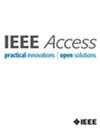Scattering Medium Removal Using Adaptive Masks for Scatter in the Spatial Frequency Domain
IF 3.4
3区 计算机科学
Q2 COMPUTER SCIENCE, INFORMATION SYSTEMS
引用次数: 0
Abstract
To address this issue, this paper presents an adaptive method for removing scattering media using a mask based on wireless communication fading models. We hypothesize a similarity between light propagation and wireless communication systems, which incorporates scattering estimates through models such as the Rayleigh and Rician fading models, which are applied to process the captured images and mitigate scattering effects. Our proposed method incorporates two systems: the Scattered Image Model and the Scattering Media Model. The conventional dehazing method requires processing sequences’ approximated depth map or specific background. However, the proposed method functions regardless of the image’s depth and specific background colors. To validate the proposed method, we conducted optical experiments and tested outdoor images. The results were compared with conventional haze-removal methods, such as dark channel prior and Peplography, using various image quality metrics, e.g., the Peak Signal-to-Noise ratio, Structural Similarity Index Measurement, Tone Mapped Image Quality, and Feature Similarity Index Measurement extended to color imagery. The experimental results demonstrated significant improvements over the conventional methods across all metrics.基于自适应掩模的空间频域散射介质去除
为了解决这一问题,本文提出了一种基于无线通信衰落模型的掩模自适应去除散射介质的方法。我们假设光传播和无线通信系统之间存在相似之处,通过瑞利和瑞利衰落模型等模型结合散射估计,这些模型用于处理捕获的图像并减轻散射效应。我们提出的方法包含两个系统:散射像模型和散射介质模型。传统的除雾方法需要处理序列的近似深度图或特定背景。然而,该方法的功能与图像的深度和特定的背景颜色无关。为了验证所提出的方法,我们进行了光学实验和户外图像测试。使用各种图像质量指标,如峰值信噪比、结构相似指数测量、色调映射图像质量和扩展到彩色图像的特征相似指数测量,将结果与传统的雾霾去除方法(如暗通道先验和人群成像)进行比较。实验结果表明,与传统方法相比,该方法在所有指标上都有显著改进。
本文章由计算机程序翻译,如有差异,请以英文原文为准。
求助全文
约1分钟内获得全文
求助全文
来源期刊

IEEE Access
COMPUTER SCIENCE, INFORMATION SYSTEMSENGIN-ENGINEERING, ELECTRICAL & ELECTRONIC
CiteScore
9.80
自引率
7.70%
发文量
6673
审稿时长
6 weeks
期刊介绍:
IEEE Access® is a multidisciplinary, open access (OA), applications-oriented, all-electronic archival journal that continuously presents the results of original research or development across all of IEEE''s fields of interest.
IEEE Access will publish articles that are of high interest to readers, original, technically correct, and clearly presented. Supported by author publication charges (APC), its hallmarks are a rapid peer review and publication process with open access to all readers. Unlike IEEE''s traditional Transactions or Journals, reviews are "binary", in that reviewers will either Accept or Reject an article in the form it is submitted in order to achieve rapid turnaround. Especially encouraged are submissions on:
Multidisciplinary topics, or applications-oriented articles and negative results that do not fit within the scope of IEEE''s traditional journals.
Practical articles discussing new experiments or measurement techniques, interesting solutions to engineering.
Development of new or improved fabrication or manufacturing techniques.
Reviews or survey articles of new or evolving fields oriented to assist others in understanding the new area.
 求助内容:
求助内容: 应助结果提醒方式:
应助结果提醒方式:


